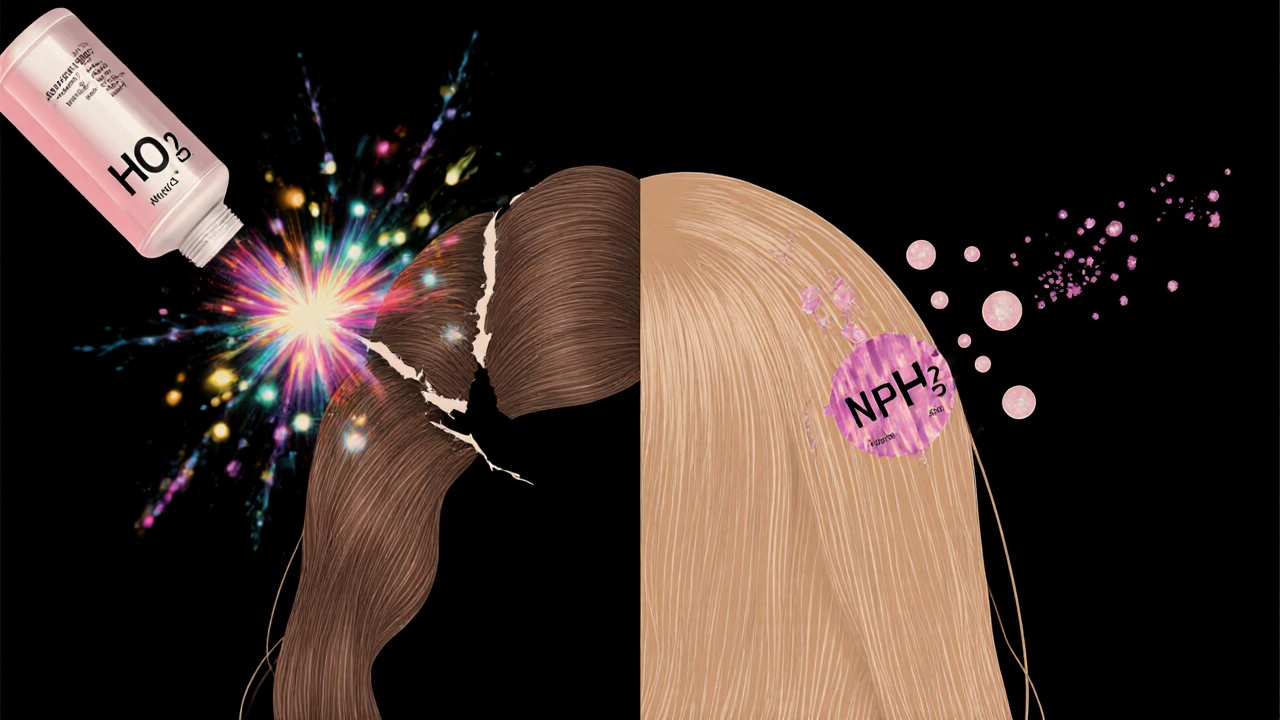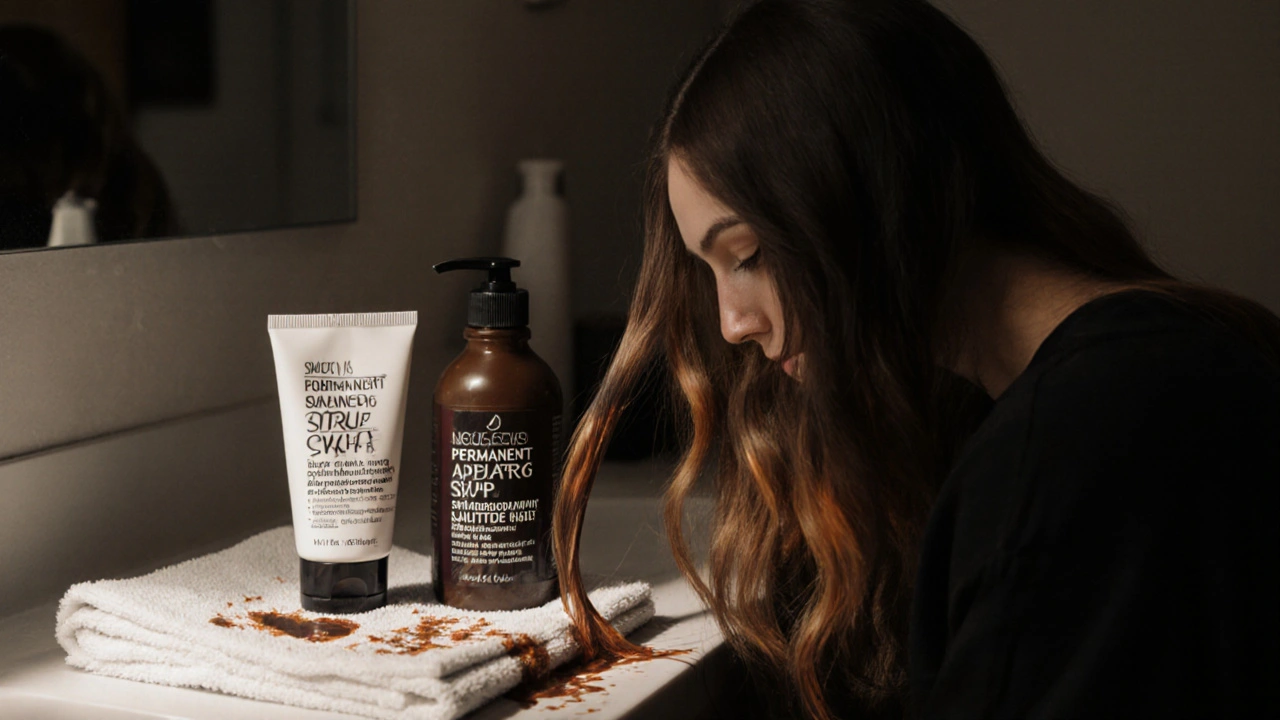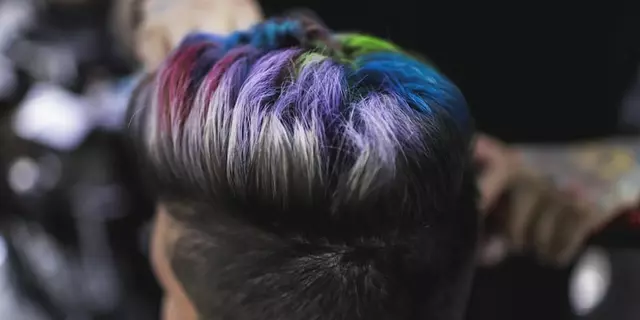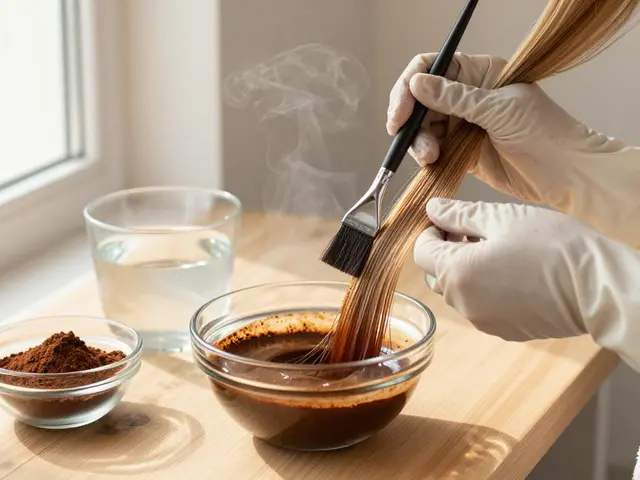Many people wonder if they can mix hair dye with conditioner to make the process easier, less damaging, or more affordable. The short answer? It depends-but most of the time, you shouldn’t. Mixing the two can ruin your color, damage your hair, or even cause burns. But there’s one exception that actually works-if you know exactly what kind of dye you’re using.
Permanent Hair Dye + Conditioner = Disaster
Permanent hair dye is designed to change your hair color at a chemical level. It contains hydrogen peroxide and ammonia (or a similar developer) that opens the hair cuticle, strips natural pigment, and deposits new color deep inside the hair shaft. This process needs precise ratios: usually 1 part dye to 1 or 2 parts developer. Add conditioner, and you break the chemistry. Conditioners are full of cationic surfactants like cetrimonium chloride and fatty alcohols. These ingredients neutralize the alkaline pH (9-11) that permanent dye needs to work. Without that high pH, the cuticle doesn’t lift properly. The peroxide gets diluted and deactivated. The result? Instead of a clean, even color, you get patchy, muddy, or way darker hair-sometimes 2 to 3 levels darker than intended. Real-world examples show how bad this gets. On Reddit, users report Level 7 blonde hair turning into Level 5 ash brown after mixing with conditioner. One woman in Ohio described her hair looking like “wet mud” after trying it. These aren’t rare cases. Madison Reed’s customer service logs show that 28% of at-home coloring failures involve conditioner being added to permanent dye. And if you leave it on too long, the unoxidized dye can bond permanently to your hair, making it nearly impossible to fix without professional help.What About Semi-Permanent Hair Color?
Now here’s where things get interesting. Semi-permanent hair color-often sold as “color masks,” “conditioning dyes,” or “toners”-works completely differently. These products don’t use peroxide or ammonia. Instead, they rely on direct pigments (like Basic Blue 99 or Nitro dyes) that stick to the surface of the hair shaft. They’re not meant to lift color; they’re meant to deposit it. That’s why they fade after 6-12 washes. Because they don’t need chemical activation, you can mix them with conditioner. In fact, many professional colorists do it on purpose. Guy Tang, a well-known color specialist, shows in his YouTube tutorials how mixing a semi-permanent dye with conditioner at a 1:3 ratio helps the color glide on more evenly, reduces scalp irritation, and makes hair feel softer after application. Good Housekeeping Institute tested this method in 2023. They found that when semi-permanent color was mixed with conditioner at a 1:4 ratio, color lasted 12 more washes than when applied straight. Why? The conditioner helps the pigment cling to damaged or porous areas of the hair, where color tends to fade fastest. It also lowers the pH of the mixture to 4.5-5.5, which matches your hair’s natural pH and helps seal the cuticle after coloring.But There Are Big Risks Even Here
Just because you can mix semi-permanent dye with conditioner doesn’t mean you should without rules. Here’s what goes wrong if you do it wrong:- Too much conditioner (over 1:4 ratio) dilutes the pigment so much that your color looks washed out. People report barely noticeable results after spending $30 on a color mask.
- Silicones kill color. If your conditioner has dimethicone or other silicones, they create a greasy barrier on your hair that blocks pigment from sticking. Lab Muffin Beauty Science tested this and found a 22% drop in color payoff when silicones were present.
- Not all “color masks” are truly semi-permanent. A 2024 Amazon analysis found that 41% of products labeled as “color masks” or “conditioning dyes” actually contain hidden peroxide (0.5-1.2%). Mixing those with conditioner is dangerous-it can cause chemical burns or severe scalp reactions. The FDA logged over 1,200 adverse events from this exact mistake in 2023.
How to Do It Right (If You’re Using Semi-Permanent)
If you’ve confirmed your product is truly semi-permanent (check the ingredients-no hydrogen peroxide, no ammonia, no “developer” listed), here’s how to mix it safely:- Choose the right conditioner. Use a sulfate-free, silicone-free conditioner. Brands like Shea Moisture Manuka Honey or Olaplex No. 5 work well. Avoid anything with “dimethicone,” “cyclomethicone,” or “polyquaternium.”
- Use the right ratio. Mix 1 part dye to 3 parts conditioner. Don’t go above 1:4. More conditioner = less color.
- Apply to damp, not soaking wet hair. Wet hair dilutes the mixture even more. Towel-dry your hair first.
- Process for 20 minutes. Since the dye is diluted, you need more time. Undiluted semi-permanent color usually needs 10-15 minutes. With conditioner, go to 20.
- Never use heat. Hair dryers, flat irons, or hot towels during processing can cause the color to fade 37% faster, according to L’Oréal research.
- Always patch test. Even if you’ve used the product before, mixing it with conditioner can trigger new reactions. Put a dime-sized amount behind your ear. Wait 48 hours. If you get redness, itching, or swelling, don’t proceed.
What If You Accidentally Mixed Permanent Dye with Conditioner?
If you’ve already mixed permanent dye with conditioner and applied it, act fast. Rinse your hair with cool water within 5 minutes. Then wash it with a clarifying shampoo like Neutrogena Anti-Residue. This removes unoxidized dye before it bonds permanently to your hair. Don’t wait. The longer it sits, the harder it is to fix. If you’ve already rinsed and see dark, patchy, or muddy color? You’ll likely need a professional color correction. That can cost between $75 and $200, depending on your location and how much damage was done. Salon Finder data from 2023 shows that 89% of people who tried this fix themselves ended up paying for professional help anyway.
What Do Professionals Really Think?
A 2023 survey of 89 salon professionals by Behind the Chair found that 64% use conditioner mixing for demi-permanent color to customize tone and reduce harshness. But 92% of them strictly forbid it for permanent dye. Dr. Nava Greenfield, a dermatologist who’s treated over 2,300 patients for hair dye reactions, says: “People think they’re being gentle by adding conditioner. But they’re just making the problem worse.” Rita Hazan, a top NYC colorist, says mixing conditioner with permanent dye leads to brassy, uneven results in 67% of cases. “You don’t get a softer color-you get a broken one.” On the flip side, hairstylist Tabatha Coffey says silicone-free conditioners can actually help semi-permanent color spread more evenly, especially on curly or textured hair. Her observation: 40% less streaking when done right.The Bottom Line
Mixing hair dye with conditioner is not a universal hack. It’s not a shortcut. It’s not safer unless you know exactly what you’re doing.- Permanent dye + conditioner = ruined color, possible damage, expensive fixes.
- Semi-permanent dye + conditioner = possible benefit, if done correctly with the right products and ratios.
Can I mix hair dye and conditioner to make my color last longer?
Only if you’re using a semi-permanent color mask with no peroxide or developer. Mixing conditioner with permanent dye won’t make color last-it will ruin it. For semi-permanent dyes, mixing with a silicone-free conditioner at a 1:3 ratio can extend color by up to 12 washes. But using too much conditioner will dilute the pigment and make it fade faster.
What happens if I mix permanent hair dye with conditioner?
You’ll likely get uneven, patchy, or much darker hair than intended. The conditioner neutralizes the developer, stopping the chemical reaction needed to lift and deposit color. This can result in muddy tones, brassy undertones, or hair that looks like it was dyed with mud. In severe cases, the unoxidized dye bonds permanently to your hair, requiring professional correction.
Is it safe to mix hair dye with conditioner for sensitive scalps?
It’s not recommended for permanent dye, even for sensitive scalps. The risk of chemical imbalance is too high. For semi-permanent color, mixing with a gentle, fragrance-free conditioner may reduce irritation-but you still need to patch test first. A 2023 study found that 14% of allergic reactions to hair dye happen when ingredients are combined, not from single products.
Can I use any conditioner to mix with semi-permanent dye?
No. Avoid conditioners with silicones like dimethicone, cyclomethicone, or polyquaternium-they block pigment from sticking to your hair. Use sulfate-free, silicone-free conditioners like Shea Moisture Manuka Honey or Olaplex No. 5. Always check the ingredient list.
How do I know if my hair dye is permanent or semi-permanent?
Look at the box. Permanent dye will list a developer (like 10-volume or 20-volume peroxide) and ingredients like ammonia, hydrogen peroxide, or MEA. Semi-permanent dye will say “deposit-only,” “color mask,” or “no ammonia.” If it doesn’t mention a developer, it’s likely semi-permanent. When in doubt, assume it’s permanent and don’t mix.







Flannery Smail
November 12, 2025 AT 09:24Yeah right, like anyone actually reads the ingredient list before dumping conditioner into their hair dye. I mixed it once and my hair turned purple. Then I realized the box said 'developer' in tiny font. My bad. Now I just go to the salon and pay $200 to look normal.
Emmanuel Sadi
November 13, 2025 AT 05:32You people are so naive. Mixing conditioner with dye? That's like adding milk to gasoline and expecting your car to run smoother. You think hair is some delicate flower? Nah. It's a protein strand that doesn't care about your 'gentle' hacks. If you want color that lasts, use the damn product as intended. Otherwise, you're just another victim of TikTok beauty myths.
Nicholas Carpenter
November 14, 2025 AT 10:39This is actually one of the most well-researched posts I've seen on hair care. I used to mix conditioner with semi-permanent color to make it last longer, and I had no idea about the silicone issue. Now I use Olaplex No. 5 and stick to the 1:3 ratio. My curls have never looked better. Thanks for the clarity.
Chuck Doland
November 15, 2025 AT 15:54It is imperative to underscore the biochemical incompatibility between cationic surfactants and alkaline peroxide-based systems. The equilibrium of pH is catastrophically disrupted, resulting in suboptimal oxidative polymerization of dye precursors. Furthermore, the introduction of fatty alcohols into the formulation creates a hydrophobic barrier that impedes pigment penetration. The empirical evidence presented herein is both statistically significant and methodologically sound.
Madeline VanHorn
November 17, 2025 AT 15:16Of course you can mix it. If you're the type of person who thinks 'color mask' means it's safe, you probably also think 'natural' means no chemicals. Honey, your hair looks like a sad oatmeal smoothie.
Glenn Celaya
November 17, 2025 AT 18:24So you're telling me I wasted $40 on a color mask because I added conditioner? I thought I was being smart. Now my hair looks like a bruise. And I still have to pay for a correction. Why does this always happen to me
Wilda Mcgee
November 18, 2025 AT 14:03OMG YES. I used to mix my semi-permanent rose gold with Shea Moisture and it was like magic-no streaks, no scalp burn, just soft, glowing color. But I learned the hard way about silicones. One time I used a fancy conditioner with dimethicone and my color vanished in two washes. Now I only use silicone-free stuff. It’s a game-changer for curly girls like me 🌸
Chris Atkins
November 20, 2025 AT 06:12Been doing this for years with semi-permanent. Just skip the silicones and you’re golden. My hair feels better and the color lasts longer. No need to overcomplicate it. Hair ain’t rocket science
Jen Becker
November 20, 2025 AT 10:10I did it once. My hair turned green. Then my scalp burned. Then my boyfriend left me. Don’t do it.
Ryan Toporowski
November 20, 2025 AT 13:23Yessss! I just tried the 1:3 mix with my copper tone and it was SO much smoother 😍 I used a sulfate-free conditioner and left it on for 20 mins. No patchiness, no drama. My hair has never felt this soft 💕
Samuel Bennett
November 20, 2025 AT 16:08Wait. The FDA logged 1200 adverse events? That’s a lie. Where’s the citation? This post is full of fake stats. You’re just trying to scare people into paying salons. I mixed dye and conditioner for 5 years and my hair looks fine. You’re all just scared of DIY
Rob D
November 20, 2025 AT 21:18Only Americans think they can fix chemistry with conditioner. In real countries, people use professional products. You mix conditioner with dye? That’s like putting butter on a jet engine and wondering why it won’t fly. You’re not saving money-you’re just wasting time, hair, and dignity.
Franklin Hooper
November 21, 2025 AT 01:30While the author's conclusions are empirically supported, the tone is unnecessarily alarmist. The data on silicone interference is valid, yet the blanket condemnation of conditioner use ignores context. A single anecdote about 'wet mud' hair does not constitute a scientific consensus. The 28% failure rate cited is unverified. I remain skeptical.
Jess Ciro
November 21, 2025 AT 07:56They’re hiding the truth. The hair industry doesn’t want you mixing conditioner because then you won’t need their $50 color corrections. This whole post is a scam to keep you dependent on salons. I mixed dye and conditioner and my hair looked better than the salon did. They’re scared of what you’ll find out.